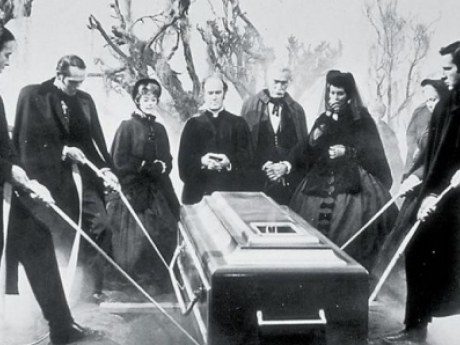Each of us knows that sooner or later he will die. But it turns out that even after death, the human body is capable of showing signs of life. Some of them seem incredible.
And scary and awkward
As the medical encyclopedia says, death is an irreversible cessation of the life of an organism, a natural and inevitable final stage of its individual existence. In warm-blooded animals and humans, it is primarily associated with a complete cessation of respiration and blood circulation.
In fact, death can consist of several stages and terminal states. And signs of biological death (when all physiological processes in cells and tissues are stopped) were constantly refined with the development of medicine. This question is vitally important in the literal sense of the word. And the point is not that a person can be buried alive (in our time it is difficult to imagine this, but it used to happen regularly) – it depends on the exact statement of death when it is possible to stop resuscitation measures, as well as to remove organs for their further transplantation. That is, to save someone’s life.
What happens to the body when all vital processes stop? The very first cells to die are brain cells. They are most sensitive to lack of oxygen.
Nevertheless, some nerve cells are able to live for so long that scientists are not quite sure whether such a person should be considered dead? After all, it seems that he continues to perceive something and (who knows!), Possibly, think!
Swedish scientists from the Karolinska Institute conducted research and came to the conclusion: the brain activity of the deceased fluctuates greatly. Either it is near zero, which indicates that death has come, then suddenly it rises to a value corresponding to the state of wakefulness. And then it falls again. What happens in the brain of the deceased remains unclear. It is possible that he has some thoughts and feelings even after the heart has stopped beating.
Scientists suggest that the nerve cells in the brain at this moment emit the last impulse. This also explains the phenomenon of experiences in a state of clinical death – the feeling of flight, the light at the end of the tunnel, a meeting with a higher being, etc.
“It is unlikely that a person is conscious during such brain activity,” said researcher at the Karolinska Institute Lars Ohlsson. “The only ones who came close to this and can at least tell something about it are those who have experienced a state close to death.” And according to believers, a flash of brain activity corresponds to the moment when the soul of the deceased leaves the body.
If you ask the deceased what he is thinking, it is not possible, then it is quite possible to see his movements and hear sounds. The fact is that after death, the body twitches for a couple of seconds, spasms occur in it. The muscles then relax, returning to their original state, and this can be perceived as movement or twitching of the limbs. There were times when a person gave up the spirit, and his chest moved, giving the impression that he was still breathing. The reason is that after death the nervous system sends signals to the spinal cord “by inertia” for some time.
Sometimes the dead make strange sounds, which, of course, horrifies relatives and those who have gathered to accompany him on his last journey. These sounds are similar to moaning, whistling, sighing, or muffled crying. There is no mysticism here: the body of every person is filled with liquids and gases. As soon as the body begins to decompose, additional gases are formed that need an outlet. They find it through the trachea. Hence the sounds.
Nnnnnnnnnnnnnnnnnnnnnnnnnnnnn
Solve – and overcome!
A huge number of bacteria live in the human body – scientists have about 10 thousand of their species, and the mass of these microorganisms can reach 3 kg. When the immune system ceases to function with our last breath, these countless hordes of “little friends” are no longer held back. The microflora begins to devour the deceased from the inside. Bacteria move freely throughout the body, absorb the intestines, and then the surrounding tissues, invade the blood capillaries of the digestive system and lymph nodes. They penetrate first into the liver and spleen, and then into the heart and brain.
Simultaneously with the activity of microbes, cadaveric spots are formed – they appear where stopped blood settles in the tissues. After 12-18 hours, the spots reach their maximum coverage, and after a few days they turn dirty green.
But it turns out that at the same time, some parts of the body of the deceased remain quite viable.
For example, despite the fact that the heart has stopped long ago, its valves may still persist. The fact is that they have connective tissue cells that live for a long time. This means that heart valves can be used for transplants. And this is after a day and a half after death!












